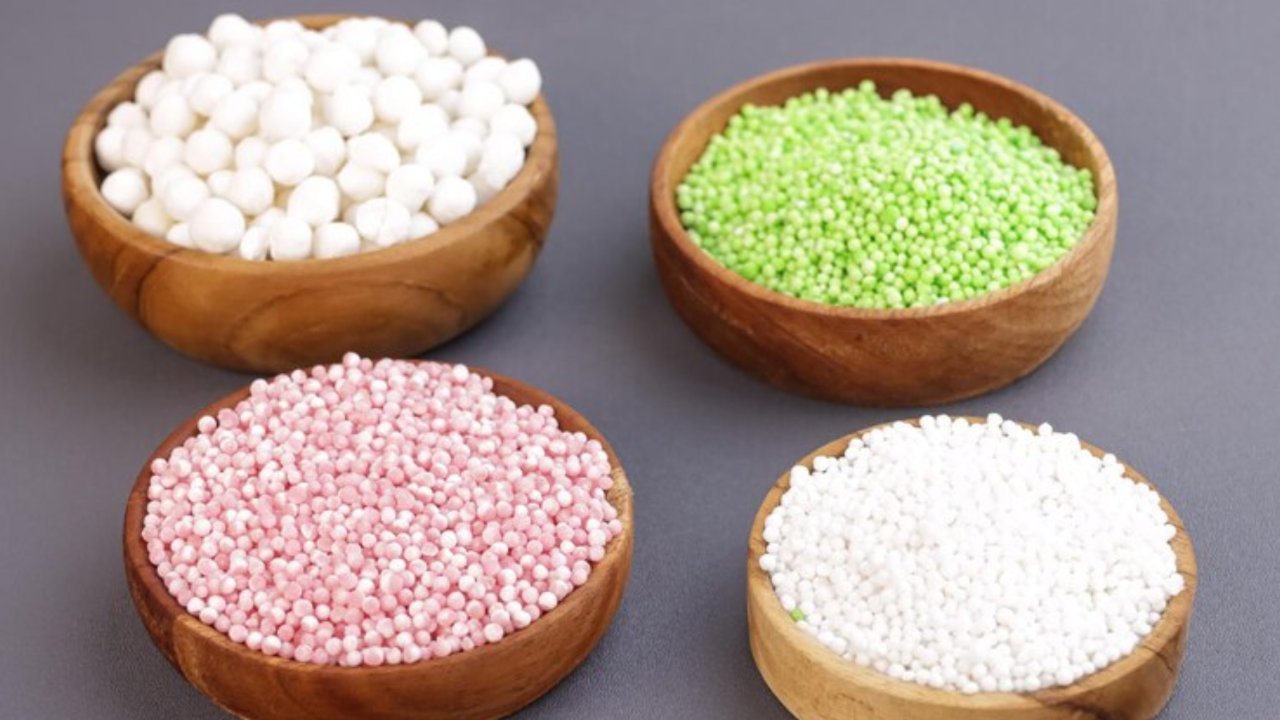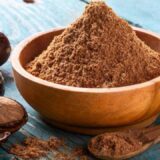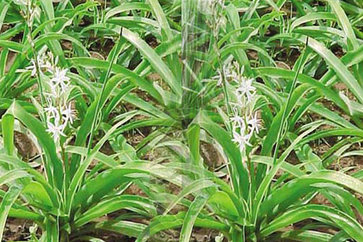Sabudana (Sago Pearls) in Ayurveda: Benefits, Uses & Risks
Have you ever wondered what makes sabudana (sago pearls) a staple ingredient in Indian fasting meals and delicious snacks? Whether you’re savoring a plate of sabudana khichdi during Navratri or enjoying crispy sabudana vadas with tea, this tiny pearl-like food has a fascinating history and impressive health benefits.
Sabudana, also known as sago pearls, is a starchy food derived from tapioca roots. It is primarily used in South Asian cuisine, especially in India, as a quick source of energy and an easily digestible food option. But did you know that sabudana is also a gluten-free, plant-based ingredient that can be used in various dishes beyond traditional recipes?
In this article, we will explore everything about sabudana—from how it’s made, its nutritional value, health benefits, and its role in weight loss, to the most popular sabudana recipes you can try at home. If you’re curious about adding sabudana to your diet or just want to perfect your cooking skills, keep reading to discover why this humble ingredient deserves a place in your kitchen.
What is Sabudana (Sago Pearls)?
Sabudana, commonly known as sago pearls, is a starchy food extracted from the roots of the tapioca plant (cassava). It is processed into small, white, bead-like pearls, which become soft and translucent when soaked and cooked.
These pearls are widely used in Indian, Thai, and Southeast Asian cuisines for making both sweet and savory dishes. The name “sabudana” is primarily used in India, while in other parts of the world, it is called sago or tapioca pearls.
The ingredient has been a part of traditional cooking for centuries, mainly as a source of quick energy and as a fast-friendly food consumed during Hindu religious fasts (vrat).
Sabudana in Ayurveda as a Food and Medicine
In Ayurveda, Sabudana is valued for its cooling properties, making it ideal for hot weather or digestive issues. It provides gentle energy, aids digestion, and is recommended for recovery or weak digestion.
Sabudana balances Vata and Pitta doshas and is suitable for all ages, including infants and the elderly, due to its easily digestible nature and high carbohydrate content.
Ayurvedic Properties of Sabudana
Sabudana, in Ayurveda, is appreciated not only for its nutritional value but also for its ability to harmonize the body’s internal energies (doshas). It is a versatile food that holds a unique place due to its specific qualities.
- Taste (Rasa): Sweet (Madhura): Sabudana has a naturally sweet taste, which is considered grounding and nourishing in Ayurvedic terms. The sweetness of Sabudana helps provide a sense of stability and is known to promote vitality and strength.
- Energy (Virya): Cooling (Ushna): Despite its sweetness, Sabudana has a cooling effect on the body. It helps to balance excess heat, making it an excellent food choice during warm weather or for individuals who tend to experience heat-related issues like inflammation or acidity. The cooling nature is soothing for the digestive system and supports detoxification.
- Post-digestive Effect (Vipaka): Sweet (Madhura): After digestion, Sabudana retains its sweet taste. This quality indicates that it is easily assimilated by the body, providing long-lasting energy. The post-digestive effect helps to nourish and rejuvenate the tissues, making Sabudana beneficial for overall health.
Dosha Effect
- Balances Vata and Pitta Doshas: Sabudana is particularly beneficial for balancing the Vata and Pitta doshas. Its sweet, cooling, and nourishing qualities help calm the dryness and irregularities of Vata while soothing the heat and acidity of Pitta. This makes it an ideal food for individuals with Vata or Pitta imbalances.
- Increases Kapha Dosha When Consumed in Excess: Although Sabudana is beneficial for Vata and Pitta, consuming it in large quantities can aggravate Kapha dosha. The heavy, starchy nature of Sabudana may contribute to increased mucus production, sluggish digestion, and weight gain if overconsumed, as it can be quite dense and moist.
In summary, Sabudana’s properties make it a great food for promoting balance in the body, especially for those with Vata and Pitta imbalances, though moderation is key to avoid excess Kapha accumulation.
Common Names and Regional Variations
- Hindi, Bengali, Gujarati, Punjabi, Marathi: Saboodana
- Urdu: Sabudaana
- English: Sago Pearls
- Kannada: Saabakki
- Tamil: Javvarisi
- Malayalam: Chavvari
- Telugu: Saggubeeyam
- Odia: Sabudana
- Assamese: Sabo-dana
- Nepali: Sabudana
- Sanskrit: Saktu or Sabudana
- Rajasthani: Sabu or Sabu dana
- Marwari: Sabo
- Maithili: Sabudana
- Konkani: Sago
- Bhojpuri: Sabudana
This list includes the names in various Indian languages, highlighting the widespread use of sabudana across the subcontinent.
Nutritional Value of Sabudana
Sabudana is primarily composed of carbohydrates, making it an excellent energy-boosting food. However, it contains very little protein and fat, which means it is not a complete meal on its own but can be paired with other nutrient-dense ingredients.
100 grams of sabudana:
- Calories: 350 kcal
- Carbohydrates: 87 g
- Protein: 0.2 g
- Fat: 0.1 g
- Fiber: 0.9 g
Vitamins and Minerals Present
Although sabudana is not highly nutritious on its own, it does contain small amounts of essential minerals like:
- Calcium: Supports bone health
- Iron: Aids in red blood cell production
- Potassium: Helps maintain heart health
- Magnesium: Supports muscle and nerve function
Because it lacks essential vitamins, sabudana is often paired with ingredients like peanuts, milk, vegetables, and yogurt to make it more nutritious.
Comparison with Other Staple Foods
| Nutrient | Sabudana (100g) | Rice (100g) | Quinoa (100g) | Cornstarch (100g) |
|---|---|---|---|---|
| Calories | 350 kcal | 130 kcal | 120 kcal | 381 kcal |
| Carbs | 87g | 28g | 21g | 91g |
| Protein | 0.2g | 2.7g | 4.1g | 0.3g |
| Fiber | 0.9g | 0.4g | 2.8g | 0g |
Sabudana is higher in carbs and calories than rice and quinoa, making it a great option for quick energy but less ideal for a protein-rich diet.
Sabudana is not just a nutritious food, but also a powerful aid in Ayurvedic healing, offering a variety of health benefits that contribute to overall well-being.
Its unique properties make it an ideal choice for promoting vitality, restoring balance, and aiding recovery.
1. Energy Boosting: Sabudana is a rich source of carbohydrates, which provide a quick and sustained release of energy. It is often consumed during fasting or physical exertion to replenish energy levels. This makes it an excellent food for athletes or anyone needing a quick energy boost.
2. Easy to Digest: Sabudana is light on the stomach and easily digestible, making it ideal for those with sensitive digestive systems or recovering from illness. Its gentle nature makes it suitable for children, the elderly, and those with digestive disorders.
3. Good for Fasting: Due to its energy-dense nature, sabudana is a preferred food during fasting. It helps maintain energy levels without overwhelming the digestive system. Its neutral flavor and texture make it easy to incorporate into a variety of fasting-friendly dishes.
4. Promotes Healthy Skin: Sabudana is known to have cooling properties that can soothe skin conditions. It is sometimes used in face masks to hydrate and refresh the skin. Its ability to provide moisture to the skin makes it especially useful for dry or irritated skin.
5. Rich in Iron: Sabudana contains a small but valuable amount of iron, which helps in the production of red blood cells and can combat iron deficiency anemia. This makes it an important food for individuals with low iron levels or those recovering from anemia.
<strong>6. High in Calcium: It offers a modest amount of calcium, which supports bone health and helps in maintaining strong teeth and bones. Regular consumption can help in preventing conditions like osteoporosis and maintaining bone density.
7. Supports Heart Health: Sabudana is low in fat and cholesterol, which helps support heart health by maintaining healthy blood pressure and cholesterol levels. Incorporating sabudana into a balanced diet can aid in reducing the risk of cardiovascular diseases.
8. Good for Digestion: The starch in sabudana helps soothe the stomach and aids digestion. It is often recommended for people with digestive issues, as it is non-acidic and gentle on the digestive system. It can also help alleviate issues like bloating and indigestion.
9. Promotes Weight Gain: For individuals needing to gain weight, sabudana provides a high-calorie source of energy with minimal fat, making it a healthy choice for weight gain. Its mild flavor also makes it easy to pair with other calorie-dense ingredients like nuts and dried fruits.
10. Rich in Antioxidants: Sabudana contains certain antioxidants that help protect the body from free radical damage and support overall health and immunity. These antioxidants play a role in reducing oxidative stress and supporting the body’s natural defense mechanisms.
With these additional benefits, Sabudana proves to be a highly versatile and healing food in Ayurveda, supporting not only physical recovery but also overall health and wellness.
Top 10 Uses of Sabudana (Sago Pearls)
1. Fasting Food: Sabudana is commonly consumed during religious fasts in many cultures. It is easy to digest and provides quick energy, making it an ideal food during periods of dietary restriction.
2. Sabudana Khichdi: A popular dish made by sautéing soaked sabudana with spices, vegetables, and sometimes peanuts. It’s a comforting and nutritious meal, often served during festivals and fasting days.
3. Sabudana Vada: A crunchy snack made by deep-frying soaked sabudana mixed with mashed potatoes, peanuts, and spices. It is a popular street food and is often enjoyed during religious fasts.
4. Sabudana Pudding: A dessert made by cooking sabudana with milk and sugar, sometimes flavored with cardamom, saffron, or vanilla. This sweet treat is often served during festivals or as a comforting dish.
5. Sabudana Soup: In some cultures, sabudana is used to make light soups that are easily digestible, especially during illness or recovery periods. The pearls provide a gentle source of energy.
6. Baby Food: Due to its soft texture and easy digestibility, sabudana is often used in baby food preparations. It is usually cooked with milk or water and can be sweetened or flavored as desired.
7. Energy Bars: Sabudana can be used as an ingredient in homemade energy bars or snacks. Combined with dried fruits, nuts, and sweeteners, it provides a quick and portable energy boost.
8. Sabudana Pap (Chips): Sabudana can be used to make crispy pap or chips, which are seasoned and fried. They are enjoyed as a crunchy snack during tea time or as part of a festive spread.
9. Sabudana Smoothies: Cooked and cooled sabudana can be added to smoothies to give them a creamy texture. It helps to make a filling, energy-packed drink.
10. Face Masks: In traditional Ayurvedic practices, sabudana is used in skincare. It is made into a paste and applied as a face mask to soothe and hydrate the skin, thanks to its cooling properties.
These diverse uses show sabudana’s versatility, both as a food and in traditional wellness practices.
Therapeutic Uses of Sabudana in Ayurveda
- For Detoxification: Sabudana supports gentle detoxification without straining the digestive system. Its mild nature helps flush out toxins and promotes internal cleansing, making it ideal for sensitive stomachs.
- Used During Fasting: With its high carbohydrate content, Sabudana provides sustained energy during fasts, ensuring nourishment and balance while remaining easy to digest.
- Soothing for Inflammatory Conditions: The cooling properties of Sabudana help soothe Pitta imbalances, offering relief from conditions like ulcers, acidity, and skin irritations by calming inflammation and reducing heat.
These therapeutic uses make Sabudana a valuable food in Ayurveda for maintaining balance, supporting detoxification, and easing inflammation.
How is Sabudana Made?
Sabudana is primarily made from tapioca starch, extracted from the cassava root. In some countries, it can also be derived from palm starch, though this is less common. Tapioca-based sabudana is widely available and is the preferred choice for cooking.
Manufacturing and Processing Steps
- Harvesting: Cassava roots are uprooted, cleaned, and peeled.
- Grinding: The roots are crushed to extract starchy liquid.
- Settling: The extracted starch settles into a thick paste.
- Shaping: The paste is molded into tiny pearls.
- Drying: The pearls are sun-dried or machine-dried.
- Packaging: The dried sabudana is packed for sale.
This industrial processing ensures that sabudana has a long shelf life and remains fresh until cooked.
Different Types and Forms Available
Sabudana comes in different sizes and textures, including:
- Small pearls: Used for puddings and kheer
- Medium pearls: Commonly used in khichdi
- Large pearls: Ideal for frying and making crispy snacks
- Powdered sabudana: Used as a thickening agent for soups and gravies
Choosing the right size depends on the type of dish you want to prepare.
Ayurvedic Preparations Using Sabudana
Sabudana is not only a versatile ingredient but also plays a significant role in various Ayurvedic preparations designed to improve health and balance the body’s doshas. Below are a few key Ayurvedic dishes and preparations that utilize Sabudana for its therapeutic benefits:
1. Sabudana Khichdi: Sabudana Khichdi is one of the most popular Ayurvedic dishes made from soaked Sabudana, typically prepared with peanuts, potatoes, and mild spices.
Benefits:
- Improves Digestion: Easy to digest, making it ideal for those with weak digestion (low Agni).
- Boosts Energy: Provides a natural energy boost, promoting overall vitality.
- Strengthens the Body: Nourishing and supportive, strengthening the body, especially post-illness or fasting.
- Balances Doshas: Known for balancing Vata and Pitta doshas, bringing stability and harmony to the body.
- Promotes Vitality: Helps rejuvenate the body, supporting overall health and well-being.
- Ideal for Fasting: Light yet fulfilling, making it a perfect choice during fasting periods, providing nourishment without being heavy.
2. Sabudana Porridge: Sabudana Porridge is a light, comforting dish made by boiling Sabudana with milk (or water) and sweetening it with sugar or jaggery.
Benefits:
- Treats Digestive Issues: Soothes the digestive system, making it ideal for those with digestive discomfort.
- Nourishing for Recovery: Helps rebuild strength in individuals recovering from illness or surgery.
- Easily Digestible: The soft texture aids digestion and supports the body’s healing process.
- Sweet & Cooling Properties: Calms the body and mind, especially helpful for those experiencing fatigue, weakness, or dehydration.
- Ideal for Sensitive Groups: Excellent for children, the elderly, or anyone needing a light, easily absorbed meal.
3. Sabudana Water or Drink: Sabudana water or drink is made by soaking Sabudana in water overnight and then drinking the water the next morning or during the day. The soaked pearls can also be lightly boiled to create a cooling drink.
Benefits:
- Ideal During Fasting: Provides nourishment while being easy to digest, making it perfect for fasting periods.
- Cooling Effect: Helps cool the body, making it beneficial for heat-related conditions or inflammation.
- Maintains Hydration: Restores hydration, especially in hot weather or during illness.
- Restores Energy: Helps replenish energy levels, making it a revitalizing choice.
- Soothes the Stomach: Relieves discomfort, making it excellent for conditions like acidity or excess heat in the body.
- Perfect for Summer: A refreshing option during the summer months or when dealing with digestive imbalances.
These Ayurvedic preparations showcase Sabudana’s healing potential in nourishing, balancing, and strengthening the body and mind.
Each dish is tailored to promote digestion, energy, and overall wellness while leveraging Sabudana’s gentle and restorative properties.
Popular Sabudana Dishes
- Sabudana Khichdi – A Favorite Indian Dish: A light and flavorful dish made with soaked sabudana, peanuts, potatoes, and mild spices. It is a staple food during religious fasts.
- Sabudana Vada – Crispy and Delicious Snack: Deep-fried fritters made from mashed potatoes, sabudana, and spices. A crunchy tea-time snack.
- Sabudana Kheer – Sweet and Creamy Dessert: A dessert prepared by cooking sabudana in milk with sugar, cardamom, and nuts.
- Sabudana Papad – Light and Crunchy Side Dish: Thin, crispy papads made from sabudana starch, sun-dried, and fried or roasted before serving.
Sabudana Uses in Different Cuisines
Sabudana is widely used in Indian cuisine, but its versatility extends beyond India. Many other cultures incorporate sago pearls in their traditional dishes, ranging from desserts to savory meals.
Usage in Indian Fasting Foods
In India, sabudana is primarily consumed during Hindu religious fasts (vrat) because it is considered a pure and easily digestible food. Some of the most common fasting dishes include:
- Sabudana Khichdi: A light stir-fried dish with soaked sabudana, peanuts, and potatoes.
- Sabudana Thalipeeth: A crispy pancake made from sabudana, mashed potatoes, and spices.
- Sabudana Ladoo: A sweet treat made with roasted sabudana flour, sugar, and ghee.
- Role in Thai and Southeast Asian Cuisine
Sabudana is used in various Thai, Indonesian, and Malaysian dishes, mostly as a thickening agent or in desserts. Popular preparations include:
- Sago Pudding: A coconut milk-based dessert with tapioca pearls and sweetened syrup.
- Bubble Tea: A Taiwanese-origin drink where large tapioca pearls are added to milk tea.
- Kolak: An Indonesian dessert with sabudana, bananas, and palm sugar syrup.
How It Is Used in Western and Fusion Recipes
Sabudana has recently gained popularity in Western countries as a gluten-free alternative in modern recipes. Some innovative ways to use it include:
- Sabudana Pancakes: A nutritious gluten-free breakfast option.
- Sabudana Energy Bars: Mixed with nuts, honey, and dried fruits for a healthy snack.
- Sabudana Smoothies: Blended with milk and fruits for a refreshing drink.
Is Sabudana Good for Weight Loss?
Many people wonder if sabudana can be part of a weight-loss-friendly diet. While it is high in carbohydrates, it can still be included in a balanced diet when consumed correctly.
Sabudana is high in calories and carbs, which can lead to weight gain if consumed in large quantities. However, eating it in moderation and combining it with high-fiber vegetables and proteins can make it a healthy addition to a diet.
How to Make Sabudana Healthier
To keep sabudana meals diet-friendly, try the following tips:
- Use minimal oil: Avoid deep-frying and opt for pan-frying or steaming.
- Pair with proteins: Add peanuts, yogurt, or paneer to improve its nutritional value.
- Include fiber-rich vegetables: Combine with spinach, carrots, or bell peppers.
- Watch portion sizes: Stick to ½ cup of cooked sabudana per serving to avoid excess calorie intake.
Best Ways to Include It in a Balanced Diet
Sabudana can be a part of a healthy lifestyle if consumed wisely:
- Eat it pre-workout for an instant energy boost.
- Use it as a light dinner option paired with yogurt and vegetables.
- Incorporate it into low-fat kheer using skim milk and natural sweeteners.
Sabudana vs Other Starches (Rice, Quinoa, Cornstarch)
Sabudana is often compared to other starches like rice, quinoa, and cornstarch. Each has its benefits and best-use cases.
Nutritional Comparison
| Nutrient | Sabudana (100g) | White Rice (100g) | Quinoa (100g) | Cornstarch (100g) |
|---|---|---|---|---|
| Calories | 350 kcal | 130 kcal | 120 kcal | 381 kcal |
| Carbohydrates | 87g | 28g | 21g | 91g |
| Protein | 0.2g | 2.7g | 4.1g | 0.3g |
| Fiber | 0.9g | 0.4g | 2.8g | 0g |
Digestibility and Health Impact
- Sabudana is easier to digest than rice and quinoa, making it a better option for people with sensitive stomachs.
- Quinoa is higher in protein and fiber, making it more suitable for weight loss and muscle gain.
- Cornstarch is mostly used as a thickening agent, while sabudana can be used in a variety of dishes.
- Cooking Versatility and Taste Differences
- Sabudana absorbs flavors well, making it perfect for both sweet and savory dishes.
- Rice is more versatile and widely used in global cuisines.
- Quinoa has a nutty flavor, while sabudana has a neutral taste that pairs well with spices.
Sabudana for Babies and Pregnant Women
Sabudana is considered a gentle and nourishing food for infants and expecting mothers.
Benefits for Infant Growth and Development
- Easy to digest and chew, making it suitable for babies.
- Provides instant energy for growing children.
- It can be used in homemade baby cereals and porridges.
Precautions and Best Ways to Introduce Sabudana
- Start with small portions and check for any allergic reactions.
- Cook sabudana thoroughly to avoid choking hazards for babies.
- Avoid adding too much sugar or salt when preparing baby food.
- Importance During Pregnancy and Lactation
- Helps provide quick energy to pregnant women.
- Easy to digest, making it suitable for women with morning sickness.
- Can be paired with milk and dry fruits for added nutrition.
Sabudana (sago pearls) is a versatile, gluten-free, and easy-to-digest ingredient that has been enjoyed for centuries. Whether you’re looking for a quick energy boost, a vrat-friendly meal, or a fun addition to modern recipes, sabudana is a fantastic choice.
Sabudana (sago pearls) holds an esteemed place in Ayurveda as a nourishing and healing food. Its gentle, easily digestible nature makes it ideal for strengthening and revitalizing the body, particularly during periods of illness, recovery, or fasting. By balancing the Vata and Pitta doshas, it promotes overall wellness

























